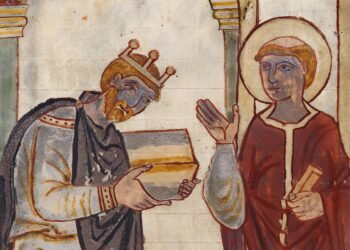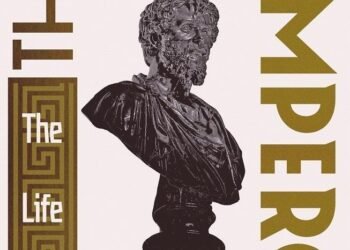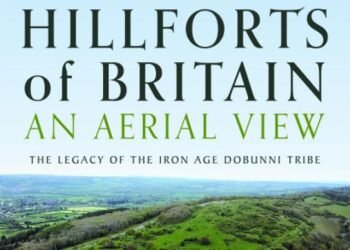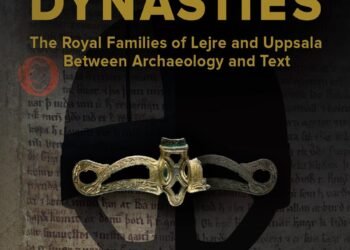A Ph.D. opportunity is currently available at the Faculty of Humanities, Social Sciences, and Education (HSL) of UiT – the Arctic University of Norway.
The position is related to demographic changes in the Far North during the Iron and Middle Ages and is part of the research group Creating the New North and the Department of Archaeology, History, Religious Studies, and Theology’s (AHR) division of Archaeology.

The main aim of this opportunity is to obtain a doctoral degree by conducting research. The program period will begin with the position’s commencement, and admission to the Ph.D. program is a requirement for employment.
This is a full-time position for three years, with the potential for an extension of the appointment period.
Provided that the doctoral thesis is presented for assessment within either a period of 3 or 3.5 years, the Ph.D. candidate is eligible for a completion grant for either 6 or 12 months.
This grant is intended to be used for additional qualification activities, such as higher education teaching courses, lecturing, or other relevant faculty work.
Further information regarding the completion grant program is available at the provided link.
The workplace is at UiT in Tromsø. You must be able to start in the position within a reasonable time after receiving the offer.
Department of Archaeology, History, Religious Studies and Theology’s (AHR)
AHR employs 70 academics within the fields of Archaeology, History, Religious Studies and Theology and is home to the national Registration Centre for Historical Data (RHD).
The department is responsible for teaching, research and public dissemination with a particular focus on the multi-ethnic and multi-cultural landscape of northern Fennoscandia within national and international comparative frameworks. AHR is an active department that employs 10 PhD candidates and 4 postdoctoral researchers associated with the department’s various divisions and research groups.
The Department’s Division of Archaeology
AHR’s division of Archaeology has an international staff of 14 members, including four PhD candidates and one postdoctoral researcher. The division conducts research on a broad range of culture-historical topics, Saami archaeology, theory and method, natural environments, cultural heritage studies and contemporary archaeology.
Much of this research is conducted within collaborative research groups and projects. AHR also employs academics with extensive knowledge on demographic research using historical and archaeological data. This includes cooperation with experts as the Norwegian Institute for Cultural Heritage Research (NIKU).
The project
The PhD position is financed by UiT and will contribute knowledge fundamental to the advancement of archaeological and historical research on settlement and society in the High North. The aim of the project is to map demographic change in the High North in the Iron Age and Middle Ages.
Research will employ established methods of paleodemographic modelling based on statistical analyses of radiocarbon dating as an indirect demographic variable. Results should be interpreted together with other relevant demographic variables derived from, for instance, archaeological, osteological, or historical sources. Cross-disciplinary approaches that develop the methodology further are encouraged.
The resulting synthesis will ideally advance our understanding of demographic conditions in the counties of Nordland, Troms, and Finnmark in the Iron Age and Middle Ages beyond that facilitated by previous research approaches.
The candidate is expected to discuss their results within a culture-historical context. Potentially relevant topics include, but are not limited to, connections between demographic fluctuations and climatic change, epidemics, social organization, settlement patterns, economic change, trade relations, social, cultural and/or ethnic interaction and gender dynamics.
The empirical data is to be sourced from existing databases and archives. The project does not entail new archaeological investigation or radiocarbon dating.
Contact
For further information about the position, please contact Associate Professor Marte Spangen:
or Head of Department Christine Smith Simonsen:
Qualifications
The position requires a master’s degree in Archaeology or a foreign degree recognized as equivalent to a Norwegian master’s degree, with a minimum grade of B or equivalent. Applicants who have not completed their master’s degree upon application may be considered provided that they obtain their degree with the aforementioned minimum grade prior to employment.
Applicants with a master’s degree in a field of study other than Archaeology may be evaluated provided that they have achieved the aforementioned minimum grade and can document sufficient expertise relevant for the position. The candidate is expected to complete their doctoral studies within the field of Archeology.
In the assessment, the emphasis is on the applicant’s potential to complete a research education based on the master’s thesis or equivalent, and any other scientific work. In addition, other experience of significance for the completion of the doctoral programme may be given consideration.
Applicants must document fluency of in English. Nordic applicants can document their English capabilities by attaching their high school diploma. Due to the nature of the source material, applicants should be competent in Norwegian or another Scandinavian language. If not, applicants are highly recommended to develop competency during their term of appointment.
The evaluation process will place emphasis on the project description, which must outline a feasible project within the advertised field of research. The project description shall not exceed 10 pages, literature references included. It must include a desription of the project topic, research questions, and a reasoning for choosing these. The final project description will be developed in cooperation with the supervisor.
Applicants should have experience with quantitative data analysis. Knowledge of the cultural history of the High North will be considered advantageous.
Motivation and personal suitability will be taken into account.
If you already hold a PhD or have equivalent competence, you will not be eligible for this position.
Admission to the PhD programme
For employment in the PhD position, you must be qualified for admission to the PhD programme at the Faculty of Humanities, Social Sciences and Education and participate in organized doctoral studies within the employment period.
Admission normally requires:
- A bachelor’s degree of 180 ECTS and a master’s degree of 120 ECTS, or an integrated master’s degree of 300 ECTS.
- A master’s thesis with a scope corresponding to at least 30 ECTS for a master’s degree of 120 ECTS.
- A master’s thesis with a scope corresponding to at least 20 ECTS for an integrated master’s degree of 300 ECTS.
All applicants should have a grade point average of B (or equivalent) on their master’s degree in order to be admitted to the PhD programme. The grade point average also applies to 300 ECTS points integrated five-year master’s degrees, in which all courses are to be included in the grade point average. A more detailed description of admission requirements can be found here.
Applicants with a foreign education will be subjected to an evaluation of whether the educational background is equal to Norwegian higher education, following national guidelines from NOKUT . Depending on which country the education is from, one or two additional years of university education may be required to fulfil admission requirements, e.g. a 4-year bachelor’s degree and a 2-year master’s degree.
Inclusion and diversity
UiT The Arctic University of Norway is working actively to promote equality, gender balance and diversity among employees and students, and to create an inclusive and safe working environment. We believe that inclusion and diversity are a strength and we want employees with different competencies, professional experience, life experience and perspectives.
If you have a disability, a gap in your CV or immigrant background, we encourage you to tick the box for this in your application. If there are qualified applicants, we invite at least one in each group for an interview. If you get the job, we will adapt the working conditions if you need it. Apart from selecting the right candidates, we will only use the information for anonymous statistics.
We offer
- You will be included in a well-functioning research group
- Possibility for up to a year’s extension of the appointment period
- A good academic environment with dedicated colleagues
- Flexible working hours and a state collective pay agreement
- Pension scheme through the state pension fund
More practical information for working and living in Norway can be found here: https://uit.no/staffmobility
Application
Your application must include:
- Cover letter explaining your motivation and research interests
- CV
- Diploma for bachelor’s and master’s degree
- Transcript of grades/academic record for bachelor’s and master’s degree
- Explanation of the grading system for foreign education (Diploma Supplement if available)
- Documentation of English proficiency
- Contact information for 2-3 references
- Master’s thesis, and any other academic works
- Project description (up to 10 pages)
Qualification with a master’s degree is required before commencement in the position. If you are near completion of your master’s degree, you may still apply and submit a draft version of the thesis and a statement from your supervisor or institution indicating when the degree will be obtained. You must still submit your transcripts for the master’s degree with your application.
All documentation to be considered must be in a Scandinavian language or English. Diplomas and transcripts must also be submitted in the original language, if not in English or Scandinavian. We only accept applications and documentation sent via Jobbnorge within the application deadline.
General information
The appointment is made in accordance with State regulations and guidelines at UiT. At our website, you will find more information for applicants.
A shorter period of appointment may be decided when the PhD Fellow has already completed parts of their research training programme or when the appointment is based on a previous qualifying position PhD Fellow, research assistant, or the like in such a way that the total time used for research training amounts to three years.
Remuneration for the position of PhD Fellow is in accordance with the State salary scale code 1017. A compulsory contribution of 2 % to the Norwegian Public Service Pension Fund will be deducted.
We process personal data given in an application or CV in accordance with the Personal Data Act (Offentleglova). According to the Personal Data Act information about the applicant may be included in the public applicant list, also in cases where the applicant has requested non-disclosure. You will receive advance notification in the event of such publication, if you have requested non-disclosure.
Website: https://en.uit.no/























